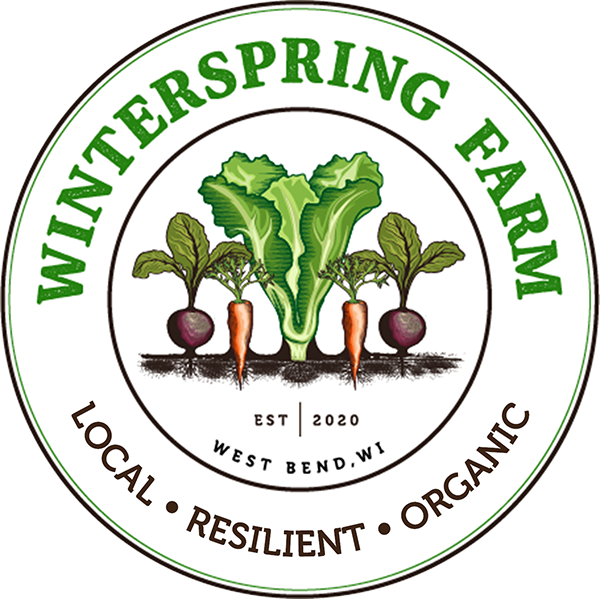Winter Squash
Vegetable Profile: Winter Squash (Cucurbita maxima, C. moschata, C pepo)
Description
Winter squash comes in a variety of textures, flavors, shapes, and sizes. They are the beacon of fall, with their mature rinds and seeds great for roasting. We harvest them typically in the beginning of October, and cure them in a warm area with good circulation to increase storage life and quality.
Types of winter squash we usually offer
Acorn Squash
Shaped like, well, an acorn! But with deep grooves going from stem to blossom-end. The skin is dark green with blushes of orange or yellow, and the flesh is a light orange-yellow. The texture is drier than other types like buttercup or butternut.
Acorn squash on the curing rack
Buttercup Squash
This squat, round-shaped squash is dark green, with a cup shape at the blossom end. It has a creamy, sweet flavor and buttery smooth texture when cooled.
Buttercup crate with cross-section
Butternut Squash
Said to be the best squash for winter storage, this khaki-colored, smooth-skinned squash is bright orange on the inside and super sweet.
Butternut squash ready for market
Delicata Squash
Oblong with skin striped dark green and pale yellow, this squash gets rave reviews for its sweetness and its thin, edible skin.
Kabocha Squash
This super rich, nutty, sweet squash is another favorite. It has either bright red-orange skin or blue-gray. Its flesh is a goldenrod yellow and it’s a good keeper to boot.
Red-orange kabocha.
Blue-gray kabocha.
Spaghetti Squash
Pale yellow flesh with signature spaghetti-like strands, this winter squash has more in common with summer squash in terms of neutral flavor, with the capabilities for storage. Learn more about spaghetti squash.
Nutrition
Winter squash is a good source of carbohydrates, beta-carotenes, potassium, and magnesium. Its a also rich in fiber, and contains iron, B vitamins, zinc, and phosphorous. In traditional Chinese medicine, it’s considered a warming Qi tonic that aids the digestion through the spleen, stomach, and large intestine.
Storage
Store winter squash in a cool, dark place with low moisture for best results. Check back often to make sure no bruises or cuts have developed on the fruit, which will compromise its integrity. Storage life varies depending on the type of squash, but typically it should be used in at most 3 months. Avoid plastic bags or containers, as those trap moisture and encourage spoilage.
Use
It takes a sharp knife and a steady hand to cut the squash, but it’s well worth it. Cooking methods vary depending on the squash type, but generally, I cut it lengthwise and scoop out the seeds, washing them for roasting later.
Then, I roast the squash with the cut side down, for the first leg of the cooking cycle. Then I flip them cut-side up, season or stuff them, and continue roasting until soft.
Resources:
The New Whole Foods Encyclopedia by Rebecca Wood
Asparagus to Zucchini by Fairshare Coalition
SpecialtyProduce.com
Our own experience!














